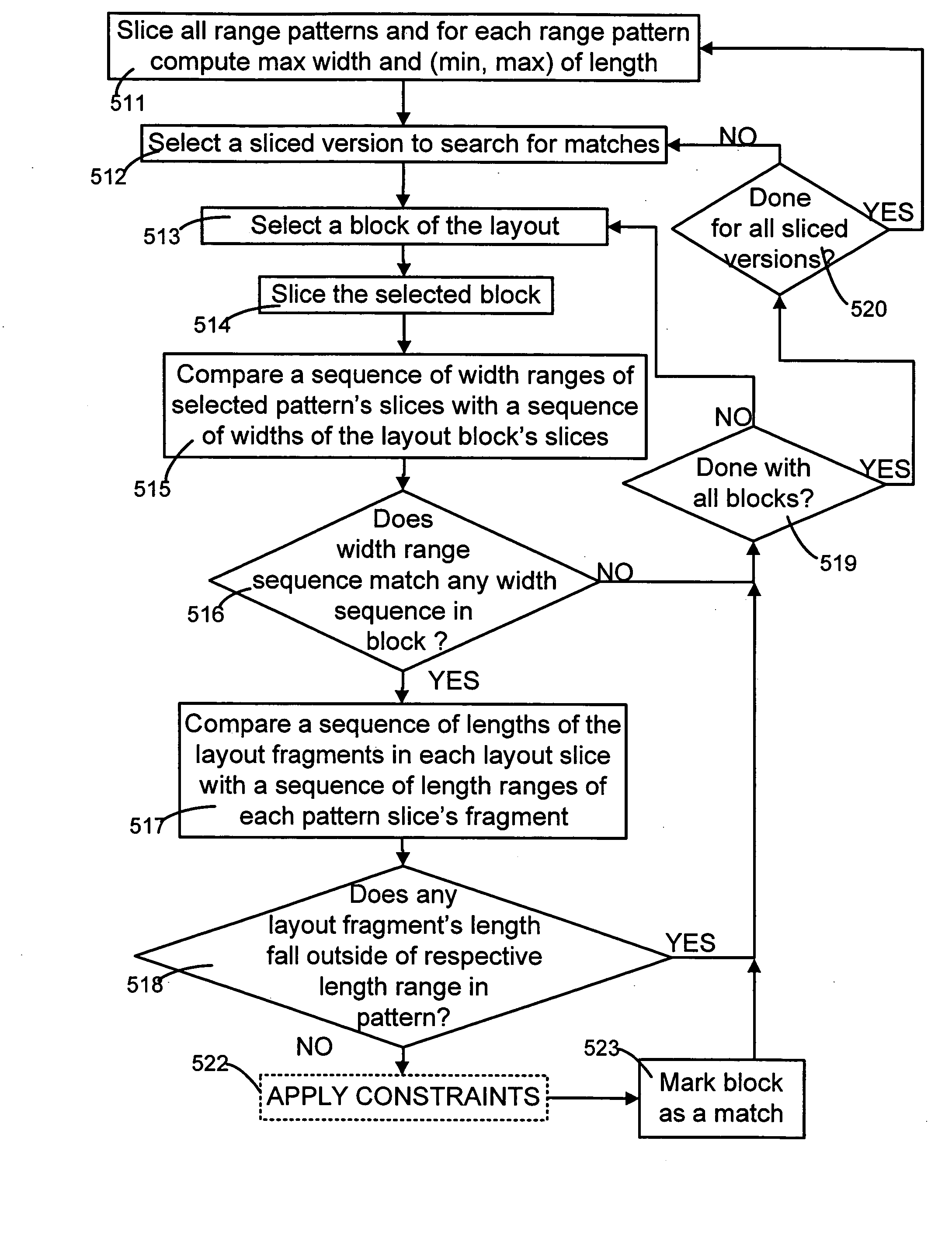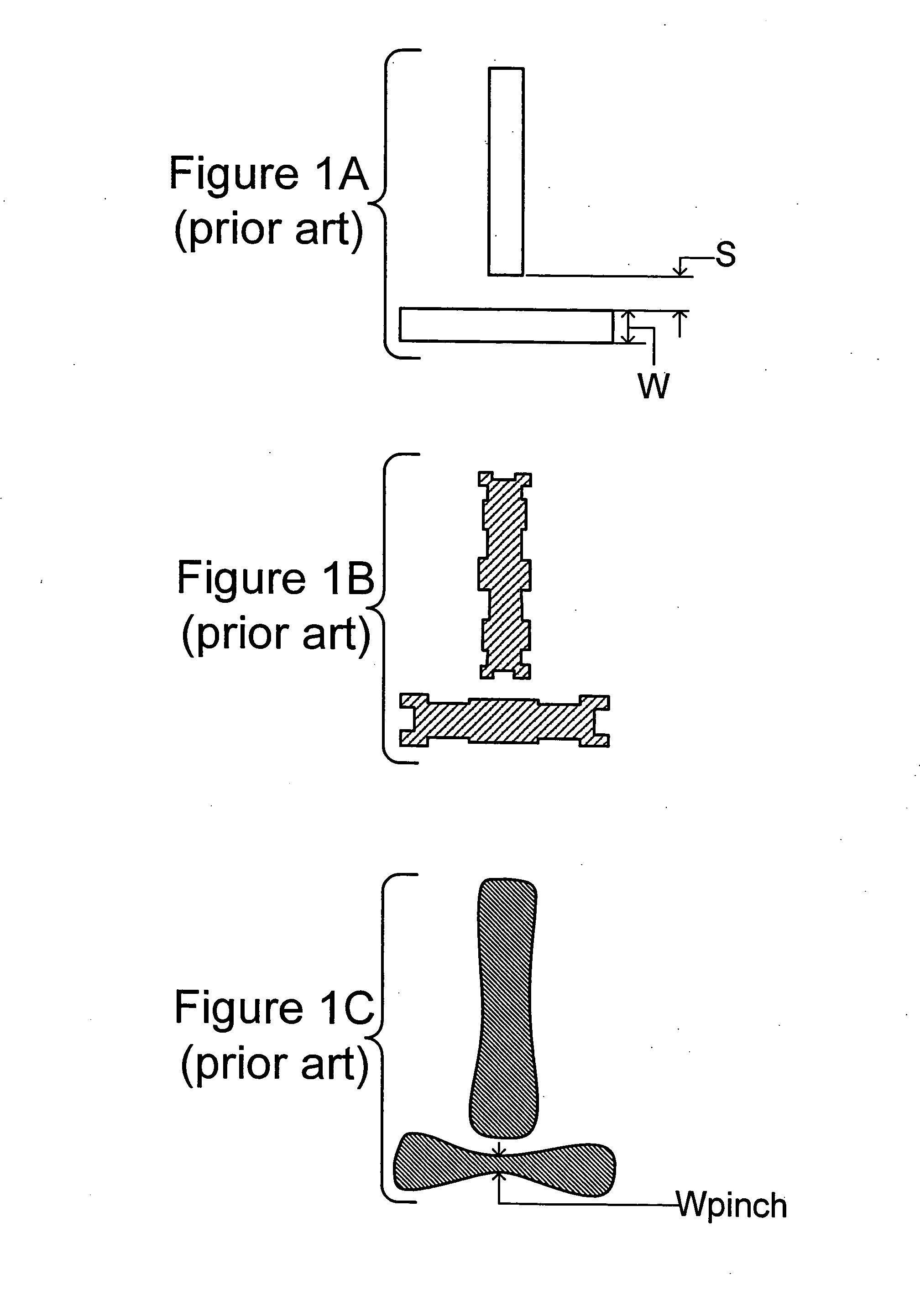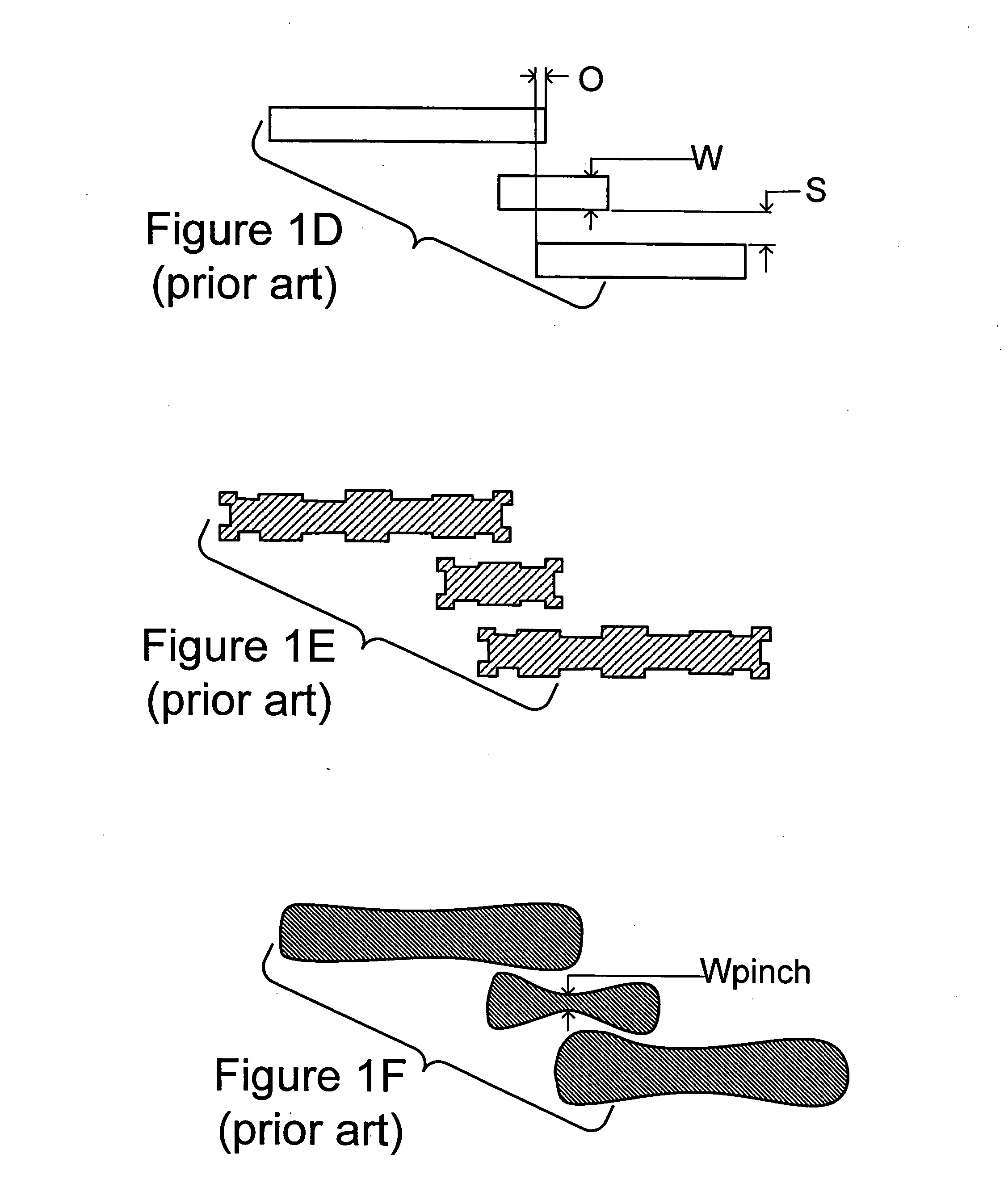Identifying layout regions susceptible to fabrication issues by using range patterns
a technology of range pattern and layout region, applied in the field of layout design, can solve the problems of one or more defects, it is increasingly difficult to achieve reasonable fidelity (including resolution and depth of focus), and reticle enhancement technology (ret) such as optical proximity correction (opc), phase shifting mask (psm), can not overcome such fabrication problems, and the effect of increasing the difficulty of achieving reasonable fidelity
- Summary
- Abstract
- Description
- Claims
- Application Information
AI Technical Summary
Benefits of technology
Problems solved by technology
Method used
Image
Examples
Embodiment Construction
[0054] A computer, when appropriately programmed in accordance with the invention, contains in memory at least one data structure to represent numerous patterns compactly. The data structure (called “range pattern”) typically identifies the relative location of pairs of line segments in the patterns using a range, such as a width range for a rectangle in the pattern, as illustrated in FIG. 2A. In the example illustrated in FIG. 2A, a range pattern 200 represents an arrangement of two traces oriented perpendicular to one another, in the form of an inverted letter “T” of the English Alphabet with the two traces separated from one another by a spacing distance S. The horizontal trace in this example is represented in range pattern 200 by a rectangle 201 of fixed dimensions. The vertical trace in this example is represented by a rectangle 202 of fixed length L but the width of rectangle 202 can be any value within the range (called “width range”) defined by two values, namely a minimum ...
PUM
 Login to View More
Login to View More Abstract
Description
Claims
Application Information
 Login to View More
Login to View More - R&D
- Intellectual Property
- Life Sciences
- Materials
- Tech Scout
- Unparalleled Data Quality
- Higher Quality Content
- 60% Fewer Hallucinations
Browse by: Latest US Patents, China's latest patents, Technical Efficacy Thesaurus, Application Domain, Technology Topic, Popular Technical Reports.
© 2025 PatSnap. All rights reserved.Legal|Privacy policy|Modern Slavery Act Transparency Statement|Sitemap|About US| Contact US: help@patsnap.com



